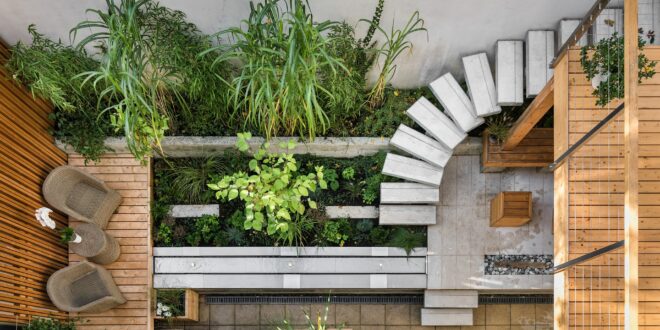We all love to see a beautifully landscaped yard, and even more so to own one. Most of us, however, do not like the fact that it takes some effort to decorate to achieve this, and at least some of the time you spend thinking constructively about potential decorative concepts. It may sound cliché to some people that intangible resources like time and effort flow through every story on this topic, but it is these concepts that make the essential difference between a really well-kept yard.
Any courtyard and terrace can be functionally acceptable to the eye by simply covering the surface with some cladding, but that does not mean that they can, therefore, be called landscaped.
Decorating is a whole creative process that starts with a good idea, continues with the selection and arrangement of materials, and finishes with fine details.
Beautifying the garden
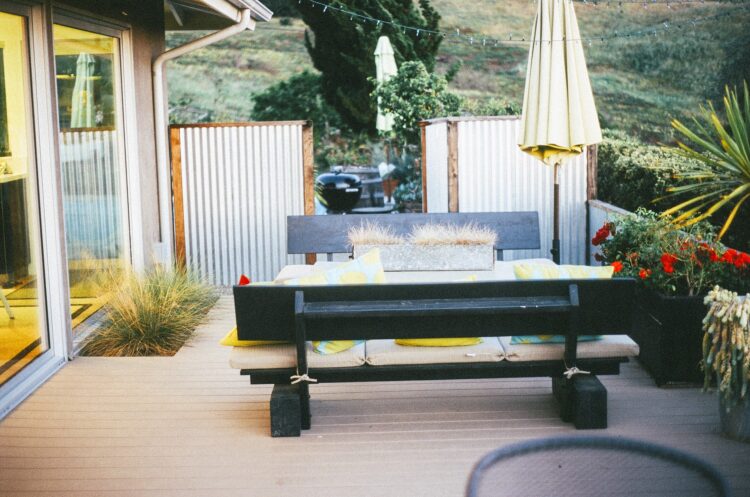
What is of a general character is the offer and selection of exterior cladding materials and their arrangement by color or sensibility. When it comes to landscaping, the biggest (and the roughest) part of the job is usually to do with paving the access paths, the space in front of the entrance or the garage, and in general all those areas with an emphasis on the practical role of treading them repeatedly. This type of work requires cladding or linings that are primarily solid and resistant to the pressure of cars and other non-slip vehicles, successfully withstanding various weather conditions during the year (sun, rain, city, snow, frost), and which overall they have a long shelf life.
Although it is always possible and feasible to pave the entire yard with the same material, it is too uniform and aesthetically not satisfactory. It is much better to coat each part according to purpose, and the combination of different textures and colors will visually enrich and beautify the appearance of the whole.
So we will present to you what materials you can use for your simple deck and patio …
Decking
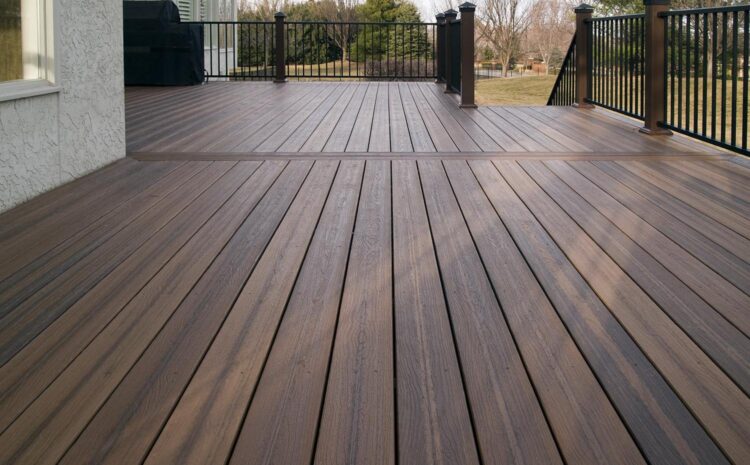
Decking as a type of wooden paneling for outdoor use, with a specific method of placement. The word is derived from the deck, and thus wishes to indicate that the decking surfaces have the appearance of a ship’s deck. Such wooden floor coverings are exposed to atmospheric influences and, above all, they must be adorned with durability and resistance to rot. And here’s the question: what to choose – wood or WPC decking
Much is known about wood and its properties, while WPC is still a big unknown for most of the market. In short, it is a composite material made from wood fibers or wood flour and plastic (usually polypropylene, polyethylene, polyvinyl chloride, etc.) are used. By mixing wood and plastic, the individual positive properties that these materials have separately are only further emphasized.
From an ecological point of view, the tree was completely degradable and as such an undeniable winner as an eco-material. When it comes to the biodegradability of WPC, it depends primarily on the percentage of plastic constituents in the composite. The higher the percentage, the smaller it is. However, it should be borne in mind that WPC is made mainly of sawdust or other residues in the timber industry and recycled plastics, and thus becomes an eco-friendly material, reducing the logging of endangered and slow-growing species of wood, such as teak.
One of the significant advantages of WPC over real wood is the almost limitless possibility of making any desired shape, it can be bent and fixed in a variety of curves, which is not always possible with wood, especially with exotic species. An additional advantage is that the WPC is easily machined with ordinary woodworking tools. The disadvantage is expansion and shrinkage due to large temperature changes.
In any case, whatever you choose, you will not go wrong. Make a simple deck, put outdoor furniture on it, like the one offered by FurnitureOkay and enjoy your garden.
Segmental pavers
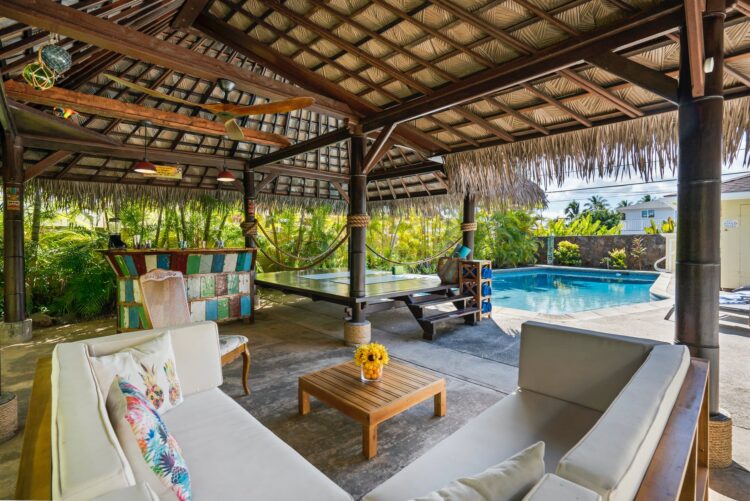
What everyone will tell you is that segmental pavers are quick and easy to install. A layer of sand about 4-6 cm thick is applied to the flat terrain, which is compacted and segmental pavers are placed on it, which are grouted with sand. It doesn’t cost much and is handy for the setup. It has natural drainage so moisture does not remain on the surface. There are no ponds on the streets of Amsterdam, where it rains several times a day, as the water quickly passes between the sand found in the segmental pavers.
It is good for old buildings that had cobblestones, but it is not the best solution for new and luxury buildings because it diminishes the value and appearance of such an object. The disadvantage with segmental pavers is that the possibilities for choosing the color and shape of the material are much smaller than for ceramics, say. But they are certainly the ideal choice for your patio.
Terrazzo
Terrazzo is the perfect floor covering for terraces, yards, as well as public spaces, garages and residential buildings. In the past, this material was standard and many spaces are still paved today, with corridors and stairways in buildings, as well as the exterior of most business premises. It is also used in interiors. Especially in rooms where there is a greater presence of water (bathrooms, kitchens, terraces). The old terrazzo is very useful because it is enough to do the machine polishing and mix with protective agents to restore the old glow.
Printed concrete
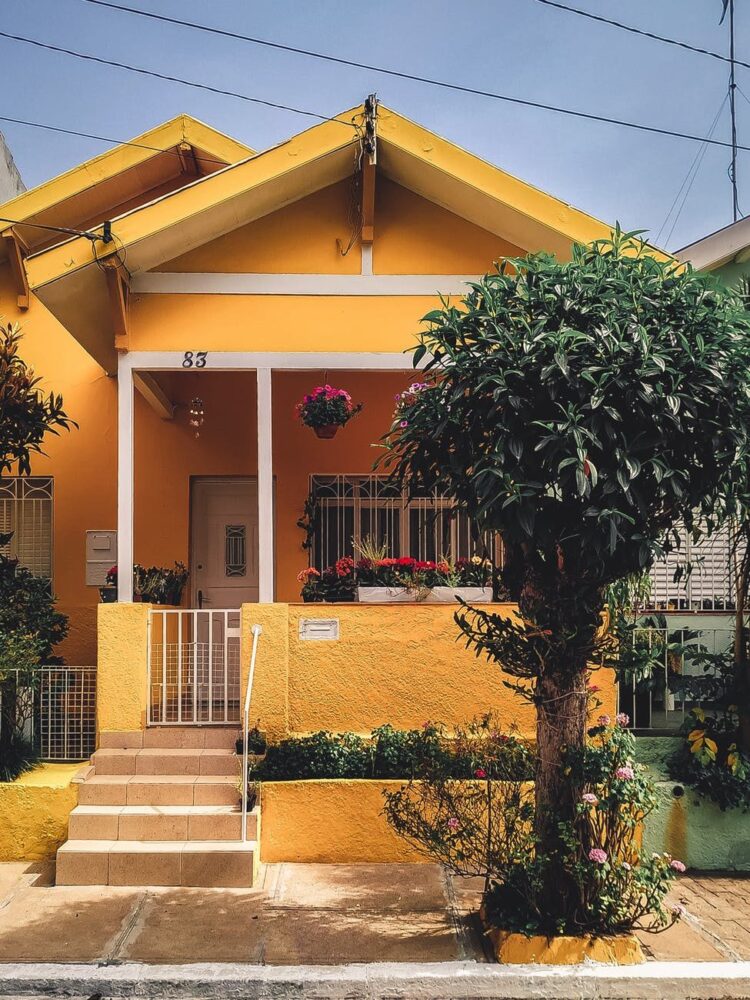
It is usually produced in graphite gray but also in warm earth colors such as ocher, brown or brick red. As the name implies, it is a material with which you will get all the positive properties of concrete including mechanical properties and an acceptable price, but also a coating that, despite the identity of the raw material, has a completely different aesthetic value than concrete.
Specifically, printed concrete also comes packed (square, rectangular or irregularly rounded), but they have different styles and a completely different wear surface. This lining is designed to resemble cobblestone, brick, ornamental stone and other related texture patterns, and is accordingly subjected to a specific machining process and finally decorated with a specific pattern. Its embossed surface is purposefully made to look old, with some cracks and a bit dilapidated, and it is this old-fashioned charm that makes it a great choice for landscaping driveways, pool areas, yards, patios, etc.
Outdoor ceramics
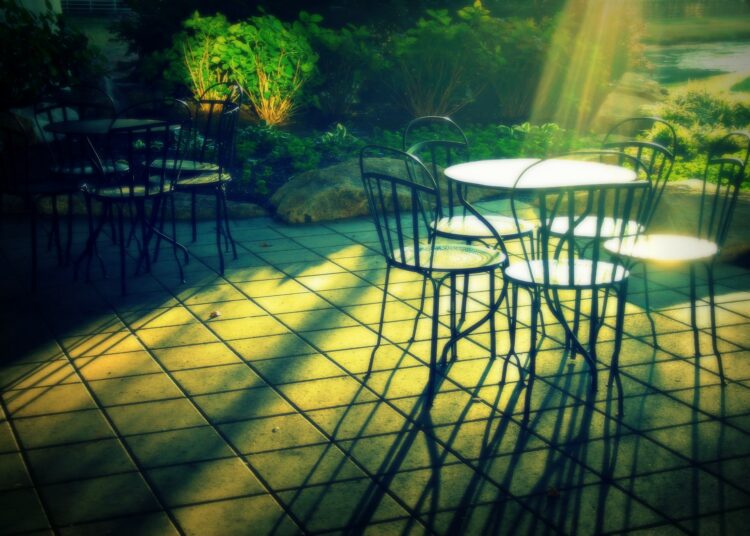
As a rule, it is thicker and larger in size than the interior, but can be up to a millimeter in size by the surface to be covered and fully adapted to each shape, which is especially important in semicircular terraces.
It is resistant to low temperatures and freezing, and is generally made with reliefs, or with a matt surface, in no way smooth to avoid slipping. The tiles also look great on fully built terraces because they are visually compatible with acrylic and other types of facades, and will undoubtedly in the true sense of the word decorate the space in front of the entrance to the house or some covered plateau – if the surface is large enough to accommodate a seating set you will get your own personal cafe where you always have a free table.
Cleaning and Maintenance Tips for Your Patio
For a more beautiful and cleaner patio, regular cleaning and maintenance is a must. Most people use a pressure washer to clean their patios. This is because it’s the best patio cleaner option a homeowner should consider as it saves a lot of time. A pressure washer is also easy to use because of a wide array of features. For more details, check “Patient Gardener” and learn more about how to choose the best pressure washer.
Check the following cleaning and maintenance tips for your patio:
- Wipeout tough concrete stains: To remove tough concrete stains, use a cup of bleach and make a cleaning solution (a 10:1 mixture of an environmentally safe cleaner and warm water).
- Spray steps and sidings: Pressure your patio for an hour or two to remove dirt and mildew stains. For tiled exterior steps, use a garden hose to clean those areas because the pressure washing force can loosen tiles.
- Rinse powder-coated aluminum patio furniture: Protect your patio furniture pieces by rinsing powder-coated aluminum patio furniture to resist rust formation and mold. Use a garden hose, not a pressure washer, to gently rinse the furniture and wipe it down with water and mild dish detergent. To avoid corrosion, don’t scrub.
- Brush Dirt out of Rattan or Wicker Furniture: Get into the groove and clean rattan and wicker using an old toothbrush. Dip soft cloth to water and soap solution and wipe off the surface of the furniture to remove dirt or grime. Allow it to dry completely under the sun, then apply lacquer using a paintbrush for extra protection.
- Update Outdoor Light Fixtures: Using a foam paintbrush with window cleaner, wipe both sides of your glass fixtures to clean them. Remove any remaining cleaner using a second dry brush so that the glass remains clear. Give the lighting fixture a new coat of paint if it fades. Coating it with spray paint is a good idea to give it a new look.
Conclusion:
Of course, all these materials can be combined. Match colors, create more backyard space like the ones for kids in kindergarten, implement a smaller or larger pool, and enjoy your ideal backyard.
 Hi Boox Popular Magazine 2024
Hi Boox Popular Magazine 2024
